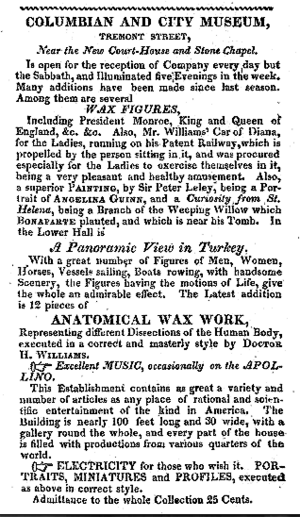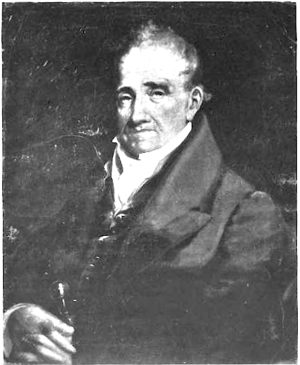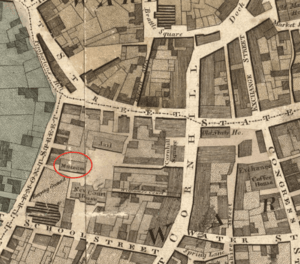Columbian Museum facts for kids
The Columbian Museum was a popular place in Boston, Massachusetts, from 1795 to 1825. It was a museum and a performance space where people could see amazing things and enjoy shows. Daniel Bowen started it, and later, William M. S. Doyle took over. The museum had many cool items like art, natural history displays, wax figures, and other interesting objects.
What Was the Columbian Museum?
Daniel Bowen (who lived from about 1760 to 1856) opened the Columbian Museum in Boston in 1795. Before this, he had a smaller display of wax figures at the American Coffee House on State Street. He kept adding more natural and man-made curiosities and paintings to his collection. By 1795, it became the "Columbian Museum."
The museum was located near the Boston Common. It featured items from Edward Savage's "New York Museum" and paintings by Robert Edge Pine. It was a real treasure trove of interesting things!
Shows and Performances
Besides showing off objects and animals, the museum was also a place for live performances. People could enjoy musical concerts with organs and singers. For example, in 1797, there was a show called "Nature in Nubibus" with readings, lectures, stories, and songs.
In 1800, the museum was "elegantly illuminated" for Christmas. They had music on a grand piano and played the concert organ and musical clocks. In 1804, a performer named Mr. Bates put on a show with skits, stories, songs, and even a "phantasmagoria" – a spooky show using a magic lantern to project ghostly images!
The museum was very popular. One historian said it helped New Englanders become "less provincial," meaning they learned more about the wider world.
Daniel Bowen also had other businesses, like the Columbian Museum Press, where he printed things. He also had an auction room and sold items.
Fires and Rebuilding
The museum faced some tough times, especially between 1803 and 1807. These events showed how determined Daniel Bowen and his supporters were.
On January 15, 1803, a fire damaged the museum. But just a few months later, it reopened in a new spot at the corner of Milk Street and Oliver Street.
In 1806, Bowen and William M.S. Doyle (who lived from 1769 to 1828) moved the museum again. They built a "costly brick edifice" – a fancy, five-story brick building – on Tremont Street, right next to the King's Chapel Burying Ground.
However, another fire struck in 1807. This fire started from an explosion during a phantasmagoria show in the top hall. The fire caused serious damage to the building. When a wall of the burned museum collapsed into the burying ground next door, it caused injuries to some people.
Even after this disaster, Bowen and Doyle rebuilt the museum. It reopened in June 1807, this time in a two-story building.
After 1807, Daniel Bowen faced financial difficulties and stepped away from running the museum. William M.S. Doyle took over as the director. He continued to run the museum until 1825. That year, Ethan Allen Greenwood bought the museum's collections for his own new museum, called the New England Museum.




